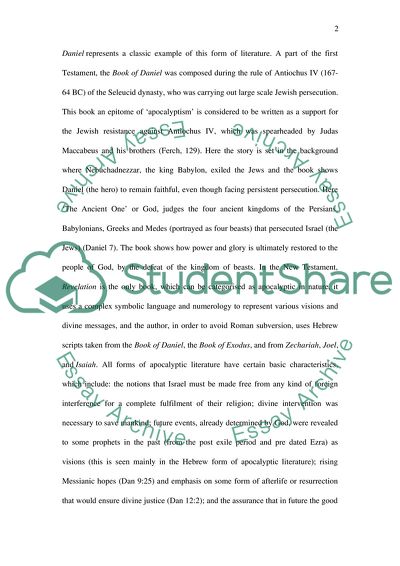Cite this document
(Characteristics of Apocalyptic Literature Essay Example | Topics and Well Written Essays - 3500 words, n.d.)
Characteristics of Apocalyptic Literature Essay Example | Topics and Well Written Essays - 3500 words. https://studentshare.org/religion-and-theology/1759172-biblical-apocalyptic-identify-the-forth-beast-of-daniel-77-12-and-the-first-beast-of-revelation-131-10
Characteristics of Apocalyptic Literature Essay Example | Topics and Well Written Essays - 3500 words. https://studentshare.org/religion-and-theology/1759172-biblical-apocalyptic-identify-the-forth-beast-of-daniel-77-12-and-the-first-beast-of-revelation-131-10
(Characteristics of Apocalyptic Literature Essay Example | Topics and Well Written Essays - 3500 Words)
Characteristics of Apocalyptic Literature Essay Example | Topics and Well Written Essays - 3500 Words. https://studentshare.org/religion-and-theology/1759172-biblical-apocalyptic-identify-the-forth-beast-of-daniel-77-12-and-the-first-beast-of-revelation-131-10.
Characteristics of Apocalyptic Literature Essay Example | Topics and Well Written Essays - 3500 Words. https://studentshare.org/religion-and-theology/1759172-biblical-apocalyptic-identify-the-forth-beast-of-daniel-77-12-and-the-first-beast-of-revelation-131-10.
“Characteristics of Apocalyptic Literature Essay Example | Topics and Well Written Essays - 3500 Words”. https://studentshare.org/religion-and-theology/1759172-biblical-apocalyptic-identify-the-forth-beast-of-daniel-77-12-and-the-first-beast-of-revelation-131-10.


